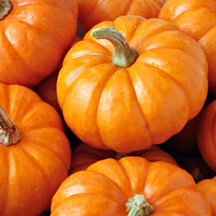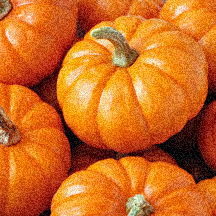LBitmap::AddNoise
Summary
Adds random pixels to a bitmap, letting you specify the percentage of coverage and the color plane.
Syntax
#include "ltwrappr.h"
virtual L_INT LBitmap::AddNoise(uRange=500, uChannel=CHANNEL_MASTER, uFlags = 0)
Parameters
L_UINT uRange
Percentage of coverage, expressed in tenths of a percent. Valid values are 0 to 1000.
L_UINT uChannel
Color plane constant. This plane will be affected by the noise. Possible values are:
| Value | Meaning |
|---|---|
| CHANNEL_MASTER * | [0] All channels. |
| CHANNEL_RED | [1] Red channel only. |
| CHANNEL_GREEN | [2] Green channel only. |
| CHANNEL_BLUE | [3] Blue channel only. |
L_UINT32 uFlags
Reserved for future use. Must be 0.
Returns
| Value | Meaning |
|---|---|
| SUCCESS | The function was successful. |
| < 1 | An error occurred. Refer to Return Codes. |
Comments
Use this function in order to add random noise to a bitmap.
Use the LBitmap::Perlin function to use a pseudo-random number generator in order to create a Perlin noise, and then procedurally transform that noise into a texture. Depending on the flags that are set, the texture can be saved as a bitmap by itself, or the texture can be combined with another bitmap. For more information, refer to Using the LBitmap::Perlin Function.
Use the LBitmap::Clouds function in order to use Perlin equations to generate pseudo-random noise, and then procedurally transform that noise into a cloud-like texture. The LBitmap::Clouds function applies equations to the Perlin noise that are different than those used by the LBitmap::Perlin function.
To update a status bar or detect a user interrupt during execution of this function, refer to LBase::EnableStatusCallback.
This function supports 12 and 16-bit grayscale and 48 and 64-bit color images. Support for 12 and 16-bit grayscale and 48 and 64-bit color images is available only in the Document/Medical toolkits.
This function does not support signed data images. It returns the error code ERROR_SIGNED_DATA_NOT_SUPPORTED if a signed data image is passed to this function.
This function does not support 32-bit grayscale images. It returns the error code ERROR_GRAY32_UNSUPPORTED if a 32-bit grayscale image is passed to this function.
Calculating Master Channel Values
In order to speed up widely used image processing filters in LEADTOOLS, the grayscale value (master channel) of a colored image is calculated using the following formulas:
#define CalcGrayValue(r, g, b) ((L_UCHAR)(((L_UCHAR) (((2 * (L_UINT) (r)) + (5 * (L_UINT) (g)) + (L_UINT) (b) + 4) / 8))))#define CalcGrayValue16(r, g, b) ((L_UINT16) (((2 * (L_UINT32) (r)) + (5 * (L_UINT32) (g)) + (L_UINT32) (b) + 4) / 8))#define CalcGrayValue32(r, g, b) ((L_UINT32) (((2 * (L_UINT32) (r)) + (5 * (L_UINT32) (g)) + (L_UINT32) (b) + 4) / 8))
Add Noise Function - Before

Add Noise Function - After

View additional platform support for this Add Noise function.
Required DLLs and Libraries
- LTDIS
- LTFIL
- LTIMGEFX
- For a listing of the exact DLLs and Libraries needed, based on the toolkit version, refer to Files To Be Included With Your Application.
Platforms
Win32, x64.
See Also
Functions
- LBitmap::BricksTexture
- LBitmap::Deskew
- LBitmap::DiffuseGlow
- LBitmap::GlowFilter
- LBitmap::HalfTonePattern
- LBitmap::HighPassFilter
- LBitmap::MaskConvolution
- LBitmap::Perspective
- LBitmap::PlasmaFilter
- LBitmap::Pointillist
- LBitmap::Sharpen
- LBitmap::Posterize
- LBitmap::Mosaic
- LBitmap::Emboss
- LBitmap::AverageFilter
- LBitmap::MedianFilter
- LBitmap::IntensityDetect
- LBitmap::SpatialFilter
- LBitmap::BinaryFilter
- LBitmap::MaxFilter
- LBitmap::MinFilter
- LBitmap::Oilify
- LBitmap::Solarize
- LBitmap::WindowLevel
- LBitmap::WindowLevelExt
- Class Members
Topics
Example
L_INT LBitmap__AddNoiseExample(){L_INT nRet;LBitmap m_Bitmap;nRet =m_Bitmap.Load(MAKE_IMAGE_PATH(TEXT("sample2.cmp")), 0,ORDER_BGR);if(nRet !=SUCCESS)return nRet;nRet =m_Bitmap.AddNoise();if(nRet !=SUCCESS)return nRet;return SUCCESS;}
© 1991-2024 LEAD Technologies, Inc. All Rights Reserved.
